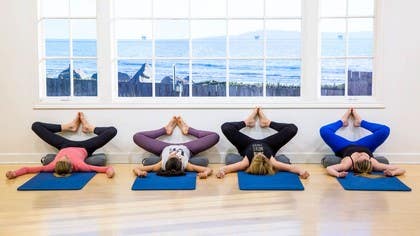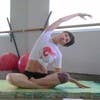
How to Breathe the Pilates Way
Breathing is arguably one of the most important Pilates principles. With six in total, the other key principles are Centering, Concentration, Control, Precision, and Flow.
Joseph Pilates was keenly interested in breathing because he suffered from asthma and other respiratory illnesses as a child in Germany. “Breathing was huge for him,” says Amy Havens, a Pilates instructor in Santa Barbara, California.
Pilates Breathing vs. Yoga Breathing
Among the uninitiated, Pilates is often assumed to be pretty much the same as yoga. One of the ways the two disciplines differ, however, is their approach to breathing. If you are new to Pilates, and especially if you come to Pilates after having done yoga, you may find Pilates breathing takes some getting used to.
Yogis expand the belly on the inhale and deflate or contract it on the exhale. Picture the way a small child breathes, unselfconsciously and fully, without worrying about how it looks. This type of breathing helps elicit the “relaxation response,” or the opposite of the fight-or-flight state. Yogis typically breathe through the nose, which has the benefit of warming and cleaning the air. This technique, known as ujjayi breath, is characterized by a whispering sound resulting from a slight constriction of the throat. Another breath pattern, called kapalabhati breath (meaning “breath of fire”), features a sharp, forceful exhale that makes a sniffing sound.
Pilates breathing doesn’t have to be loud or vigorous. Pilates instructors tend to exaggerate breath when they are leading a class or teaching a private session because it sets a rhythm and energizes their students, says Havens. It also generates lots of body heat as in the Hundred exercise, a rhythmic pumping of the arms accompanied by a chest lift. We’ll talk about how to do the Hundred a little later.
Pilates instructors offer cues about when, where, how to breathe because breathing is important for oxygenation of the body and circulation, says Havens. It also helps ensure that the body is in the correct position to perform the exercises effectively and safely.
Breathing to Stabilize the Trunk
Try This: Sit or stand and place your hands on either side of your ribcage. On an inhale, breathe into the back and sides of the body, rather than taking what’s known as a “belly breath.” Your obliques and upper back should expand, and you will feel your ribs draw apart from one another laterally (sideways). When you exhale, the ribs should knit together again.
Hint: It takes another Pilates principle, Concentration, to breathe properly, especially if you are new to the work.
The benefit of breathing this way is that it helps to stabilize through the lower trunk. In Pilates, we use the term “Powerhouse” to refer to the trunk region and the muscles that are found there. It’s hard, if not impossible, to stabilize your trunk when you take a big belly breath - the kind that expands the tummy and causes the rib cavity to rise.
If you are still not clear, Havens suggests lying on your back with your knees bent and feet flat on the floor. Place a bag of rice (or something of similar shape and weight) on your stomach. You can rest your arms on the floor beside you or keep your hands lightly on the bag of rice (or whatever you are using). Inhale and exhale deeply and slowly. Concentrate on feeling the breath expand the upper back and sides of the body. Try to prevent the bag of rice from rising and falling with each breath.
The goal of this exercise is not to keep the bag of rice from falling, but to find and activate the muscles inside the abdominal region. Engaging the muscles of the Powerhouse creates stability that protects us from injuries and, over time, helps prevent lower back pain.
Putting Pilates Breathing into Practice
Think of the classic Pilates exercise the Hundred, which is used as a warm-up in both the Mat and Reformer series. Follow these steps to put Pilates breathing techniques into practice:
- Lie on your back with the legs bent in a tabletop position or, once you are more familiar with it, with the legs extended and the arms long at your sides.
- Curl the head and shoulder tips off the floor or the headrest of the Reformer carriage. Aim your gaze at your navel.
- Vigorously pump your extended arms, reaching fingertips toward your toes.
- Inhale on a count of five and exhale on a count of five with the arms pumping on each count (ten sets of ten pumps equal one hundred, hence the name). Imagine that bag of rice and try to keep the trunk region stable and still.
- When you’ve finished, you should feel invigorated, warm, and ready to take on the rest of your workout!
In some Pilates exercises, there’s a breathing cue (“inhale” or “exhale”) linked to a specific movement in the sequence. This is to protect the spine or lower back, or to provide an optimum stretch. For example, in the classic “Cat/Cow” stretch seen in many Mat classes, the cue will usually be to inhale on the arch (Cat) and exhale on the round (Cow). In a side bending exercise, such as the Reach on the Short Box, we inhale to lift the body and lengthen the spine, and exhale as we bend to the side.
If this seems like a lot of trouble for something you do involuntarily all day long, don’t worry! Once you start to practice Pilates regularly, the breathing will become second nature.
Do you have questions about Pilates breathing? Feel free to add them to the comments below.
Comments
You need to be a subscriber to post a comment.
Please Log In or Create an Account to start your free trial.
























